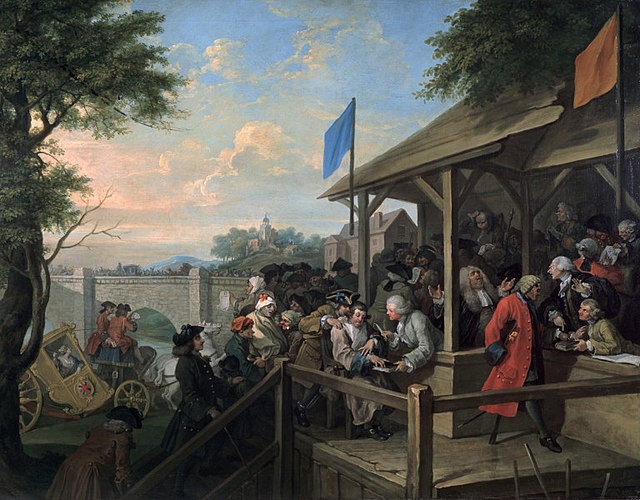Political colours are colours used to represent a political ideology, movement or party, either officially or unofficially. They represent the intersection of colour symbolism and political symbolism. Politicians making public appearances will often identify themselves by wearing rosettes, flowers, ties or ribbons in the colour of their political party. Parties in different countries with similar ideologies sometimes use similar colours. As an example the colour red symbolises left-wing ideologies in many countries, while the colour blue is often used for conservatism, the colour yellow is most commonly associated with liberalism and right-libertarianism, and Green politics is named after the ideology's political colour. The political associations of a given colour vary from country to country, and there are exceptions to the general trends, for example red has historically been associated with Christianity, but over time gained association with leftist politics, while the United States differs from other countries in that conservatism is associated with red and liberalism with blue. Mass media has driven a standardization of colour by political party, to simplify messaging, while historically the colour a candidate chose to identify with could have been chosen based on other factors such as family or regional variations.

The Polling, by William Hogarth, depicting a 1754 election to the British parliament, includes a blue flag representing the conservative Tories and a buff flag representing the liberal Whigs
Anarchists in Germany in black bloc
The 1st SS Panzer Division Leibstandarte SS Adolf Hitler (LSSAH) in their black uniforms.
The Sturmabteilung of the Nazi Party, wearing their brown uniforms.
Color symbolism in art, literature, and anthropology refers to the use of color as a symbol in various cultures and in storytelling. There is great diversity in the use of colors and their associations between cultures and even within the same culture in different time periods. The same color may have very different associations within the same culture at any time. Diversity in color symbolism occurs because color meanings and symbolism occur on an individual, cultural and universal basis. Color symbolism is also context-dependent and influenced by changes over time. Symbolic representations of religious concepts or articles may include a specific color with which the concept or object is associated.
A flock of black and white sheep grazing in the Italian countryside
A Catholic archbishop and cardinal in choir dress. Bishops traditionally wear purple, cardinals red.
A group of young Buddhist monks in Cambodia. Orange, symbolizing enlightenment, is an important color in Buddhism.







